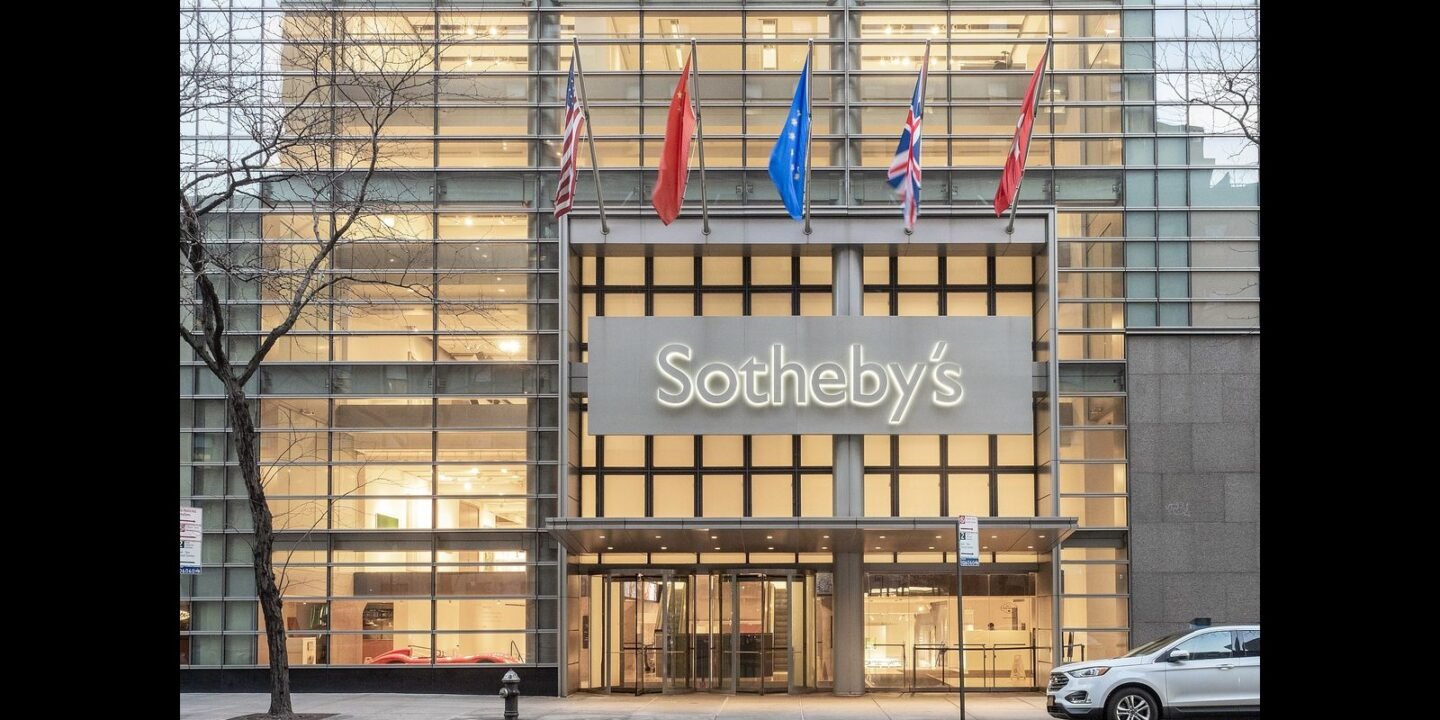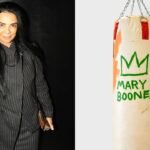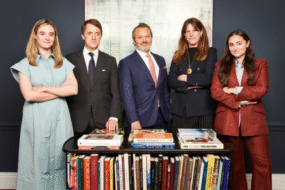
In the past two years, a global pandemic has officially cost more than six million lives (with estimates indicating that some 20 million people have actually perished due to COVID-19). The US-NATO proxy war against Russia in Ukraine has killed at least 200,000 military personnel and 14,000 civilians, while displacing eight million more. Surging inflation threatens vast numbers with fuel and food insecurity, and starvation in certain parts of the world, in the coming winter months.
Yet the world’s art market has never been in healthier shape, according to A Survey of Global Collecting in 2022, a recently issued Art Basel & UBS Report.
After a brief interruption in 2020, the art market “bounced back strongly in 2021, with aggregate sales of art and antiques by dealers and auction houses reaching an estimated $65.1 billion. Representing a 29% increase on the previous year, this figure outstrips the market’s 2019 value by $0.7 billion.”
The “robust” character of the art market mirrors the stratospheric rise in the wealth of the world’s richest people over the same period. According to Credit Suisse, “The ranks of the global ‘ultra-high net worth’ (UHNW) individuals, those who have $30 million or more in assets not including their primary residence, swelled by 46,000 last year to a record 218,200 as the world’s richest people benefited from ‘almost an explosion of wealth’ during the recovery from the pandemic.”
The combined wealth of the UHNW individuals now equals $35.5 trillion worldwide. Together with the wealth of the Very HNWIs (holding from $10 million to $30 million in liquid assets) and “mere” high-net-worth individuals (with $1 million to $10 million each), this represents an enormous sum of money in search of a lucrative return. After stocks and real estate, fine art is one such investment.
The survey by Art Basel & UBS Report describes a market that is global in scope, subject to geopolitical tensions and open to the use of digital formats both for trading and as an art form in itself, such as videos with NFTs (non-fungible tokens), to the extent that it opens new avenues of profitability. This market is highly speculative, with collectors selling almost as much artwork as they buy, and above all concerned with the financial over the aesthetic or cultural value of a work, so much so that 95 percent of the HNW collectors surveyed had purchased works of art sight unseen, with just over half (51 percent) regularly doing so.
While there was some lingering concern about COVID, most collectors still favor in-person interaction at art fairs and galleries with their dealers. Collectors planned to resume travel to the major art fair destinations, such as Art Basel and Miami Basel, which represent high-priced opportunities to view and purchase contemporary art. The cancellation or postponement of such international art fairs due to the pandemic represented a serious loss of revenue for not only galleries, more than a quarter of which generate 20 percent or more of their yearly revenue at such fairs, but for attendant services as well, such as air travel, accommodations, dining, etc.
Before the pandemic, “HNW collectors attended an average of 41 art-related events in 2019, including six gallery exhibitions and five art fairs. This fell to 36 in this sample in 2020.” However, with the “end of the pandemic,” the survey reports, “Art fairs have bounced back, with 74% of the HNW collectors surveyed having purchased at an art fair in the first half of 2022 (versus 54% in 2021), including both in-person and OVR [online viewing rooms] purchases. 65% reported that they had bought a work through an in-person event (up from 37% in 2021).”
The rich collectors are feeling flush. According to the report, their median “expenditure on art in the first half of 2022, at USD 180,000, already nearly doubled their spending in the entire pre-pandemic year of 2019 (USD 100,000) and is notably higher than in the entire year of 2021 (when they spent USD 164,000). And they’re not putting their wallets away. They plan to more than double their 2021 spending by year’s end.”
There is an almost desperate quality to this spending, as though HNWIs cannot store their money fast enough in assets that may better withstand an anticipated crisis in the economy. In fact, collectors were slightly more optimistic about the outlook for the art market in the next six months than they were about the state of the stock market over the same period (78 percent vs 75 percent, respectively). “They’re also buying more expensive art than last year. The share of collectors purchasing works priced at more than USD 1 million nearly doubled from 2021, from 12% to 23%. This is similar to the price levels at which they bought in 2019.”
The report pays considerable attention to geo-strategic shifts in power as reflected by trade between the major art centers. Those have traditionally been New York and London, though in recent years the combined mainland China and Hong Kong market has overtaken the UK for second place. This correlates closely with the location of the world’s wealthiest, who are still concentrated in the United States (145,000 HNWIs), as compared to roughly 50,000 in China and 10,000 or fewer in European capitals such as Paris and Berlin. It is noted that the activity of Russian oligarchs in the market has been checked somewhat by the war in Ukraine and the attendant sanctions.
The report documents how the globalization of the past 30 years has seen the development of art markets in places where they barely existed before, such as India, Mexico, Turkey and Brazil. However, the market remains highly unequal. “Its key players continue to be European and American: Sotheby’s, Christies, and Philips in the auction market; Art Basel and Frieze in the art fair sector; and David Zwirner, Gagosian, and Hauser & Wirth among others in the gallery market. If anything, globalization has strengthened their position and they face minimal competition from their counterparts in emerging regions.”
Social inequality also manifests itself strongly among artists, with one percent of them ranked as “super star” figures, with name-recognition and prestige from museum shows, whose work commands millions of dollars. The bulk of artists, 84 percent of whom are so-called “emerging” or unrepresented by galleries, do not participate in this market at all. It is also the case that even at the high end, artists themselves see only a portion of the money paid for their work, with 30 percent typically going to the gallery and the most lucrative sector being in resales. In this regard, the art market in the US is more attractive than that in Europe because it has no legislation concerning resale rights that would guarantee artists a share in future profits off their work, equivalent to royalties in music.
Despite the report’s overall emphasis that 2022 was the best of all possible worlds for the wealthy and the art market, a certain anxiety creeps into the report.
“Even at the very top of the wealth spectrum, where many HNW individuals have been insulated from some of these economic stresses, wealth has stalled its bull run. Forbes’ annual compilation of the world’s wealthiest billionaires showed a large increase in billionaire wealth throughout the pandemic, with certain industries such as tech, e-commerce, and health all flourishing.” However, the report continues, “figures published in March 2022 showed a contraction in both the number of billionaires (down by 3% on 2021) and their collective wealth (also decreasing 3%), with major losses in Russia following the invasion of Ukraine (34 fewer billionaires) and China (losing 87, with government regulation and greater scrutiny of tech companies as a main contributing factor).”
Data in a separate report from Wealth-X issued in November shows a continuation of the downward trend, with the number of UHNWIs said to have fallen by 6 percent in 2022, with double-digit losses in the US, Japan and France.
All is not lost! “But even with these losses, billionaire wealth has more than doubled in ten years, and at the very top of the billionaire list, wealth still grew in 2022, with the top ten billionaires increasing their combined wealth by 13% from March 2021 to March 2022.”
The report concludes by emphasizing, with unintended irony, how much these wealthy art collectors are committed to the betterment of life on the planet–not by making their $35.5 trillion available to meet the pressing needs of humanity, but by taking steps to reduce the carbon footprint produced by their travel and to use recyclable packaging for their art shipments, even if it means paying a little more.
Such an irrational system is not only inimical to the creation of meaningful art and culture accessible to broad masses of the population; it is as unsustainable as the financial house of cards on which it is based.
Sign up for the WSWS email newsletter









